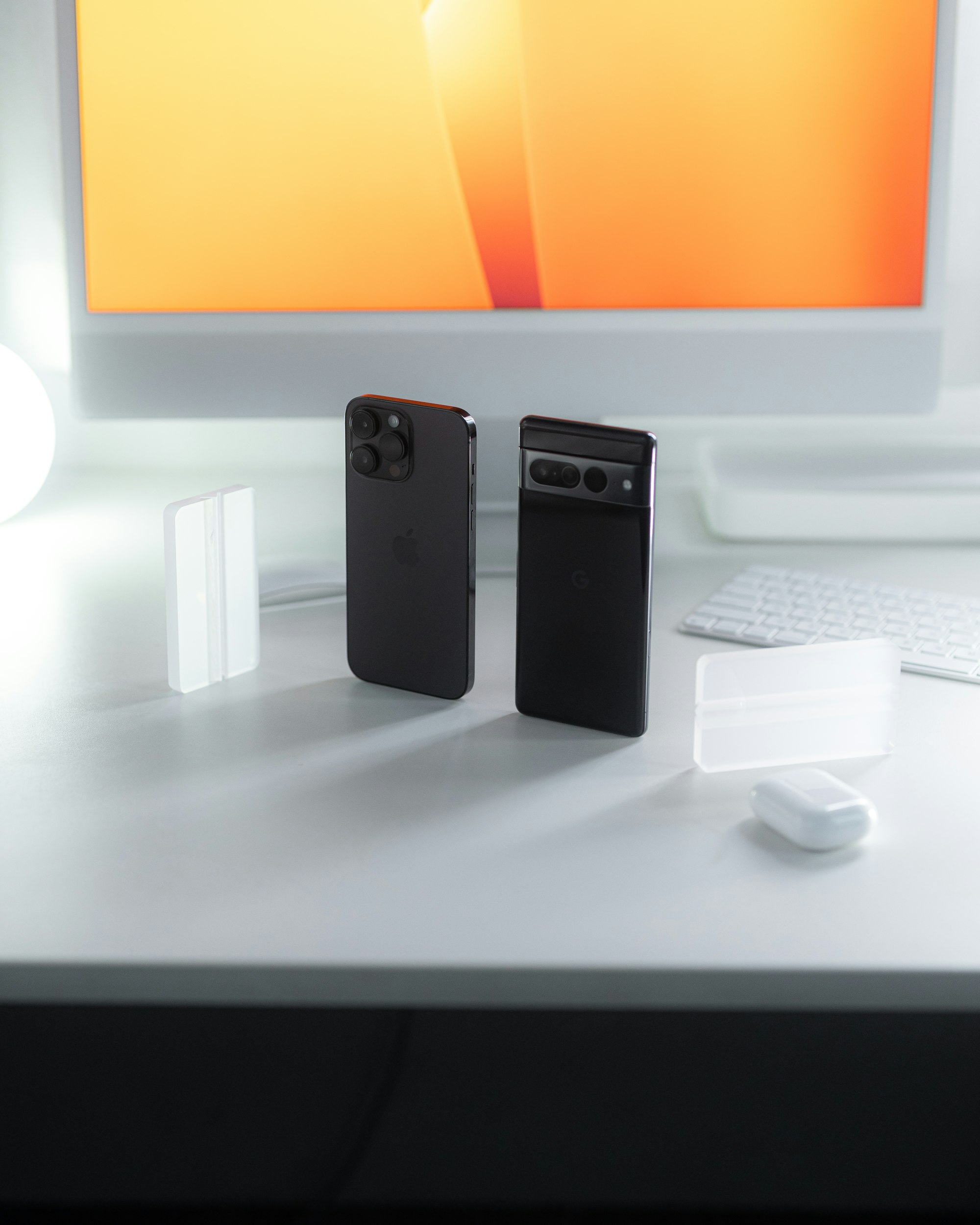Preface
I have always had a curious mind. Curiosity has always manifested itself as a desire to explore, understand, and compare. In my opinion, there is no one tool suitable for every purpose, and my purposes are so numerous that they suggest a continuous exploration of existing tools.
My first mobile phone was the Motorola "Timmy" (Motorola 6700) in 1996. It was followed by various Nokia, Sony-Ericsson, and Symbian devices. Then came the BlackBerry and, in 2009, my first Android device, an HTC Dream.
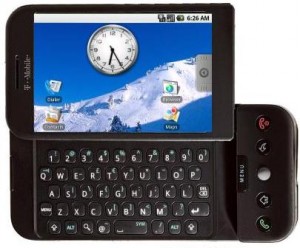
In 2010, I began to approach the iPhone world, and my iPhone 4 was an excellent device, a companion on many trips and the capturer of countless photos. From that moment on, I have always tried to stay updated on both fronts (Android/iOS), leaning towards one or the other depending on the periods and needs. I have had various devices. Among the "Google Experience" devices, the last two were the Galaxy Nexus and the Nexus 4, purchased shortly after each other. The first had better quality but a subpar camera, while the second was definitely more appreciated but soon had hardware issues (defective power button). Then I turned to other manufacturers (LG G2, Zuk Z1, Samsung Galaxy S7 Edge, Huawei Mate 10 Pro, Xiaomi Mi9T Pro, just to name the main ones). There were also some Windows Phones, just to demonstrate that I try to have both an open and critical approach to all solutions.
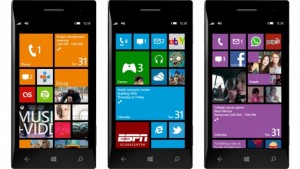
In 2020, due to the pandemic, I purchased an iPhone 11 Pro, which brought me back to the Apple world. Efficient, functional, with good battery life, stable, and fast, the device was in my hands for about a year and a half, until September 2021. It was replaced by an iPhone 13 Pro Max, my main device. At least until a few weeks ago.
After witnessing the Google I/O event on May 10th, I realized that Android was taking a well-defined direction. This piqued my curiosity, which is why I ordered a Google Pixel 7 to accompany my iPhone.
iPhone 13 Pro Max (256 GB)
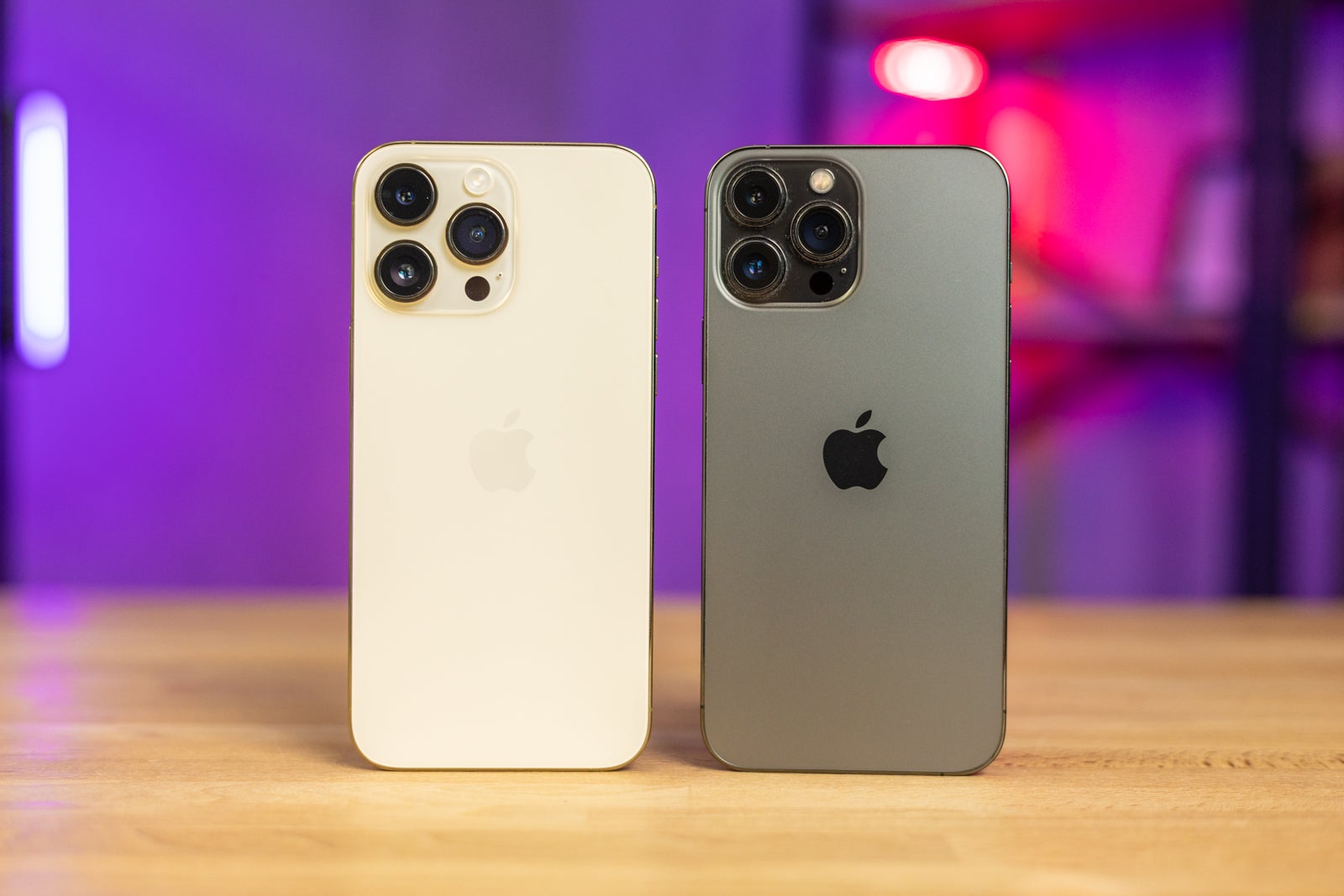
Purchased on the "day one," this device has performed well right from the start. Excellent battery life (one of the most important features for me), great photos and videos (equally important as battery life), and a closed but efficient Apple ecosystem. It has served me well, with no major surprises so far, except for some iOS bugs not directly related to my device. It's large (perhaps too much), but at the same time, it's comfortable for reading and consuming multimedia content. In my opinion, it is a definitely successful device and even now, almost two years later, still highly valuable. Paired with its ecosystem (I also have an Apple Watch 7), it's a winning combination.
The Pixel 7

I have been observing it since its release as Google devices are becoming, in my opinion, the true competitors to Apple devices. Clean experience, minimalist OS, exclusive features, in-house designed hardware. The reviews are generally positive, but those who hate it seem to really hate it. It's a polarizing device that can't leave anyone indifferent. With its unique features, it covers a specific market segment. It's not for the "mall user," but for those who want to be at the forefront of Android development and want Google as their direct software provider.
The "Challenge"
For many years, I used to carry two phones with me. When I traveled extensively abroad, I even had three: a "dumb phone" for voice calls (hey, it was the late '00s and early '10s) and two smartphones, one with an Italian SIM card and the other with a local SIM card. Dual SIM phones back then were mediocre and performed poorly.
With the arrival of my first reliable dual SIM phone (Zuk Z1), I reduced it to one phone, and I must say I really liked it.
This is the first time I've gone back to using two phones, one with a "private life" SIM and the other with a "public" SIM (work, etc.). Both constantly bombarded with many, too many spam calls, both on the same network, one on a physical SIM and the other on eSIM.

The two smartphones: Display and Battery
The first impression was strange. As soon as I turned it on and set it up, the Pixel became a furnace. It was almost impossible to hold it in my hand due to the heat. I admit I was worried, but I had read about its tendency to overheat. Then it cooled down, becoming warm from time to time. I later discovered that there was a bug in the latest Android update which was fixed within a few days. At that point, the phone is generally cool when on Wi-Fi, but it can become warm when outside and on 4G.
In the first few days of use, the battery life of the Pixel 7, even with normal usage, was ridiculously short. I had to charge it twice a day, with less than 3 hours of screen-on time (SoT). Additionally, since I got a Pixel 7 instead of a 7 Pro, I immediately noticed the difference in the display compared to the iPhone, mainly in terms of font/screen size and refresh rate. The refresh rate is not a major concern (although I do notice occasional micro-lags that I had forgotten about with the iPhone), but the font size is still a bit of an issue. In the evening, I find the default size slightly small (in certain apps), but the next step up becomes too large for my liking. There is a missing intermediate size (but being Android, I'm sure there is a solution).
Overall, the display of the iPhone 13 Pro Max is superior, but it should be compared to the Pixel 7 Pro, not the regular 7.
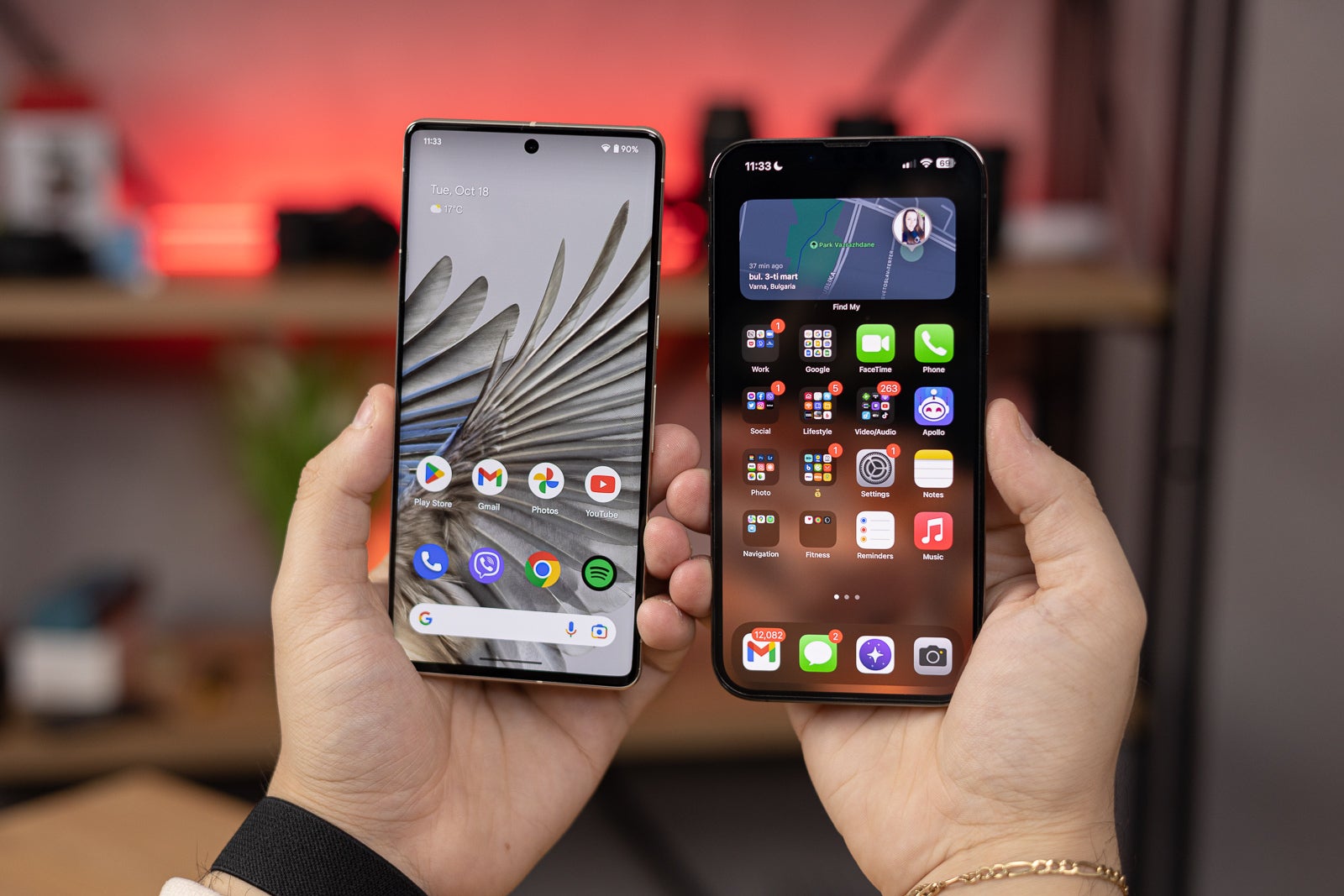
After a few days, the battery transformed. Charging it to 100% and unplugging it in the morning, I reach the evening with around 50% or a little less. It has lower battery life than the iPhone 13 Pro Max, but it is definitely acceptable. It's a bit like Dr. Jekyll and Mr. Hyde, as Galeazzi says: using the 4G network (I haven't tried 5G, as I don't need it) causes it to heat up and consume a lot of battery. I believe its internal modem is not very efficient and therefore tends to consume more and become warmer than it should.
I immediately turned off the Always On Display - I don't need it. Since I still have my iPhone and Apple Watch with me, there was no reason to keep it active.
The two smartphones: Apps and Convenience
I have installed almost all the apps that I usually use on both Android and iPhone. One of the functionalities (automatically managed by the Wireguard app on the iPhone) is to automatically activate a VPN to my server every time I'm on 4G or outside of my Wi-Fi networks. This server connects me to all my work and private VPNs and also serves as a DNS-based ad-blocker. On the iPhone, this can be easily, efficiently, and reliably managed directly through the official Wireguard app. However, on Android, it's not the same. I tried creating automations with Tasker and Automate, but they are not very reliable. In the end, I went back to using the excellent VPN Client Pro (a paid app, but in my opinion, a great tool) and configured everything within a few minutes.
The Pixel beats the iPhone in terms of portability, but they belong to different segments. For a more direct comparison, I should have compared the Pixel 7 to the regular iPhone, not the Pro Max. Overall, I really like the aesthetics of the Pixel, and the camera bar makes it stand out from the many, too many Android smartphones that all look the same.
The apps, on average, are mostly the same. Apart from a few exceptions, they are very similar. On the Pixel, I love the fact that gestures are universal: a swipe means "go back" in all apps. On iOS, on the other hand, going back can be a swipe, an upward arrow, a downward arrow, and so on. There isn't a universal gesture, and this, in many cases, can be unintuitive. However, the quality of many apps continues to be superior on iOS. The Android counterparts often seem rushed, somewhat inconsistent, and sometimes deviate too much from the default layout. Reddit, for example, is a lag fest on Android. Of course, there are thousands of different Android devices with different screens, UIs, resolutions, etc. iPhones are few and well-defined, so creating a consistent app for iOS is much easier than creating one for ALL Android devices out there.
The two smartphones: Daily Use and Notifications
The user experience is enjoyable on both devices, although the iPhone continues to feel more "polished," albeit more basic in terms of customization. I'm someone who adapts to my device, often keeping the default wallpapers, fonts, and settings. I've never felt the need for extensive customization on my iPhone, mainly because Apple's choices usually make sense and have a purpose.
The sense of freedom on the Pixel is greater. Applications have deeper access to device settings and functionalities and can modify (even radically) almost everything. The support for artificial intelligence in daily use becomes more evident day by day. It learns details about battery usage, how apps are used, and other information about how we use our smartphones, etc.
For example, I found the brightness too low in the dark and too high in normal lighting. With just a couple of "corrections," I no longer had to touch anything. The Pixel learned to provide the right brightness for my eyes.
Notifications on the iPhone are instantaneous and don't consume much battery since they are "pushed" by Apple and shown directly without significant local intervention. This creates both positive (lower energy consumption) and negative (less functionality and freedom in managing notifications by the app) effects.
On the Pixel, notifications are "pushed" by Google, but there is more potential for app-specific intervention. Therefore, it's important that the app is well programmed and optimized. If the app has performance or consumption issues, the arrival of a notification could trigger a series of background operations that are impossible (or almost impossible) on iOS.
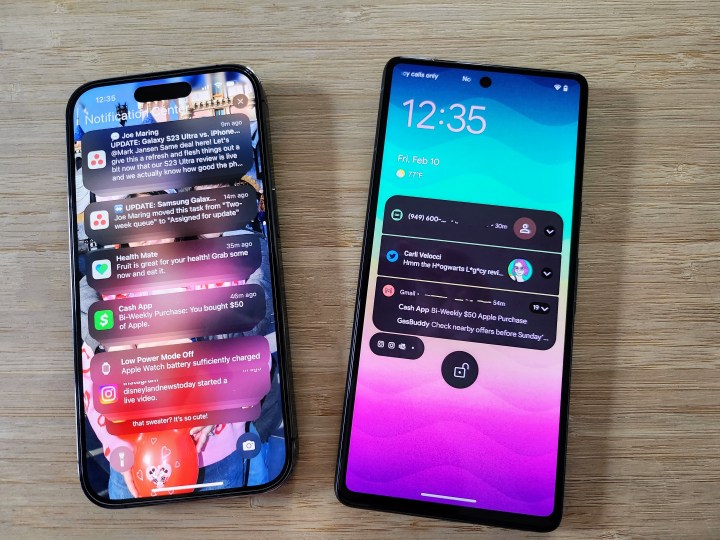
When it comes to notifications, there's no comparison. Besides the fact that the Pixel offers more options related to notifications, I can even select specific conversations within messaging apps to bypass the "do not disturb" mode. On the iPhone, I've set Telegram to be able to ring even at night or during sleep mode, but it applies to ALL conversations. On the Pixel, I can set individual conversations, so I've only allowed notifications from the channels where I receive "Server Down" alerts, and the problem is solved.
The two smartphones: Ecosystem and Smartwatches
Being accustomed to the Apple ecosystem, I immediately realized how integrated my usage had become. I missed features like Airdrop and the universal clipboard right away. I partially resolved this by using Airdroid and Kde Connect, although it's not quite the same.
For years, I've also been using an Apple Watch, starting with the 41mm Series 5 and later upgrading to the 45mm Series 7. They work well, and I've grown accustomed to them. I struggle to be without them. Apple Pay for payments, notifications, and the synchronization of usage modes between the iPhone and the Watch. Apple Health even sent me alerts when it sensed that I was getting insufficient sleep or my nighttime heart rate was too high (anticipating some health issues that I was unaware of at the time), thanks to the always-on sensors on the Watch.
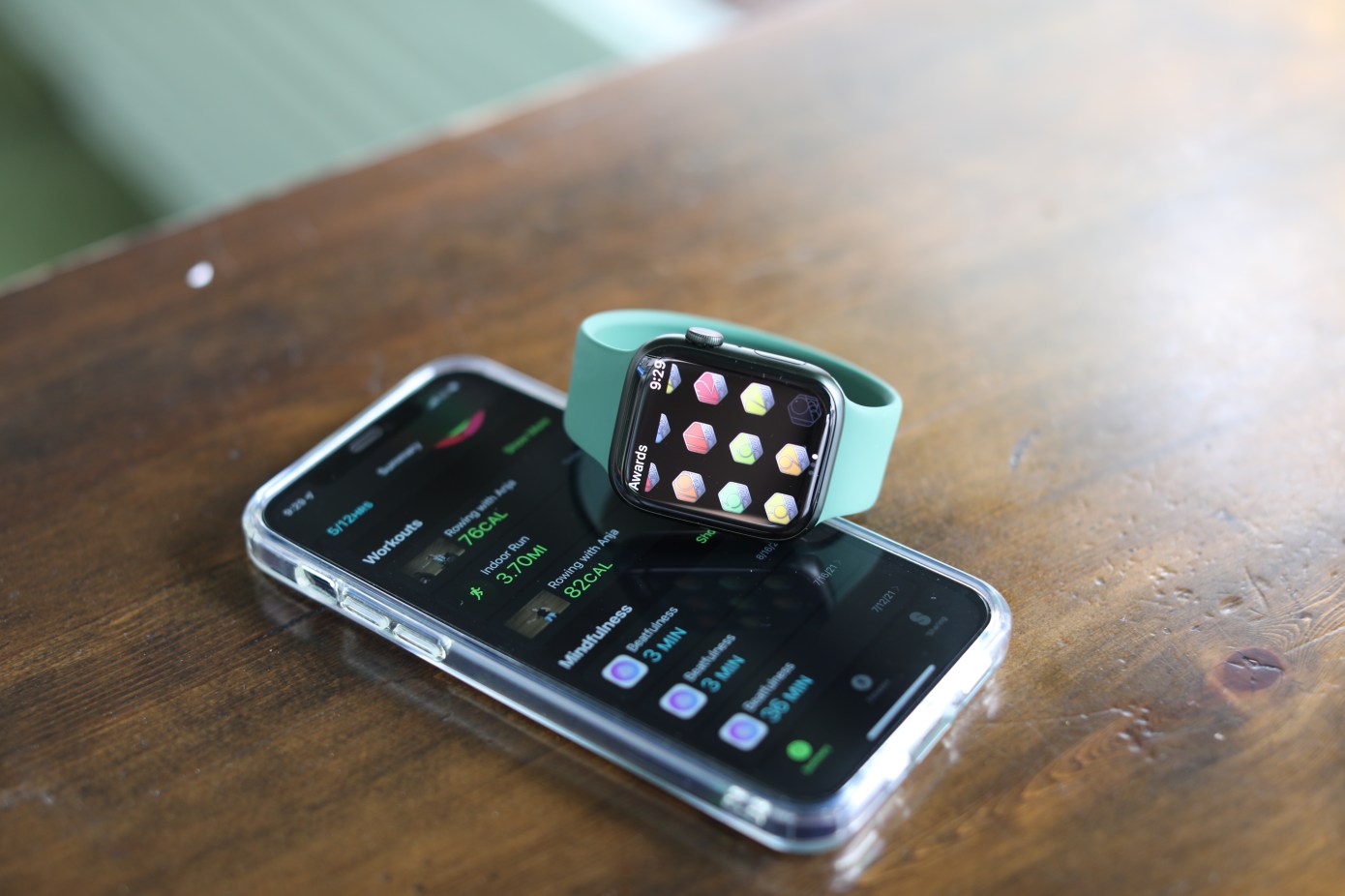
The Pixel Watch doesn't convince me. It has poor battery life, and it feels like an immature product. It may improve with future versions, but for now, I'm not convinced it's suitable for my usage. However, I found a Galaxy Watch 4 in the 40mm size for 129 euros and decided to give it a try and experience it.

At that point, I decided to put my second SIM card in the Pixel and leave both the iPhone and Apple Watch at home for a few days. Everything went well with the phone, but for the Watch...the difference was evident. Apart from the fact that the full potential of the Galaxy Watch is only realized when paired with a Samsung device, the battery life and some functionalities are noticeably inferior. The volume is low, the vibration is uncertain, and the main problem is the ridiculously short battery life. Just two hours of outdoor activity are enough to drain the battery. Therefore, it's unsuitable for my usage. I keep it as a backup since it still provides good sports and sleep tracking. However, without the synchronization of alarms and usage modes, I find it difficult to consider it a device that can replace the Apple Watch.
The two smartphones: A week without the iPhone and considerations on the camera
The battery performed quite well. Not at the level of the iPhone 13 Pro Max, but sufficient to comfortably last through the day. However, I'm not sure if it can withstand a truly stressful day. With the iPhone 13 Pro Max, I forgot about the concept of carrying a power bank. With the Pixel, I'm not confident in facing demanding days without bringing a backup, but on average, it performs quite well.
Initially, I wasn't convinced by the highly acclaimed camera. The images seemed too dark, often overly contrasted and harsh. However, over time and with experience, I realized that the photos are excellent. They are natural, unlike those from the iPhone that may appear beautiful at first glance but lack some level of detail. Even excluding the "Pixel-only" features like Magic Eraser and similar tools, the adjustments possible in the Pixel's Photos app allow for personalization and make the image truly interesting. I haven't deeply tried with the videos yet, but I still believe that the iPhone remains superior in that aspect.
![]()
The nuisance of spam calls has disappeared. Google's filtering system is extremely efficient, and from receiving 10 to 15 spam calls a day, I have now stopped receiving them altogether. It's undoubtedly a relief, and I sincerely hope that Apple also takes steps in that direction.
After a few days of dealing mainly with the limitations of the Galaxy Watch 4, I decided to move one of the SIM cards (the eSIM) back to the iPhone, mainly to be able to wear the Apple Watch again. And everything went back to how it was before, including, unfortunately, the return of spam calls.
The two smartphones: "Suddenly..."
...I realized that even though I had both devices available, I always found myself reaching for the Pixel. I was surprised myself. Undoubtedly, it's due to its user-friendliness, but also because of the greater sense of "freedom" and customization it offers. The real multitasking comes in handy when I need to perform operations on servers and don't want my SSH session to time out while retrieving passwords from Bitwarden. Additionally, I appreciate the ability to use apps like the official Proxmox app (without necessarily relying on the limited mobile web interface of Proxmox) and much more.
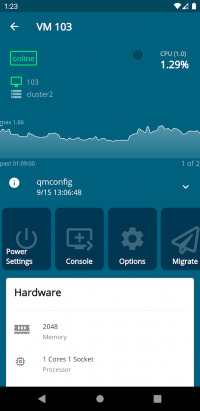
On Android, I also appreciate the multi-user feature. I always have a test user where I can perform various tests and experiments, which I can easily delete and recreate. iDevices, on the other hand, are designed for personal use.
Recently, I used Safari extensively on all my Apple devices. However, I always had issues with tab synchronization (considerable delays at best, and days or weeks of freezing in other cases). In contrast, I have always appreciated the ability to send a tab to another device using Firefox.
On the Pixel, I set Firefox as the default browser and genuinely use it, not like on the iPhone (where it's essentially a Firefox with WebKit underneath). I love the option to send a tab to another device, which I frequently do from the Pixel to my Mac when I come across something I want to read later on my computer. On Safari, I use the Reading List, but it's not quite the same.

The two smartphones: Conclusions
iOS and Android have matured significantly in recent years. With each new release, one adds features that the other has had for some time, and vice versa. Therefore, I cannot say that one is superior to the other. Both have their own pros and cons.
iOS offers a clean experience that is consistent with its ecosystem and highly integrated. The available operations and modes are limited but sufficient and clear for a large portion of users. However, recent releases have shown significant bugs and reduced battery life on many devices. The ecosystem is well designed, but leaving it can become problematic. Not everything can be exported, and once you're inside, it becomes difficult to get out. That's why my photos are stored not only on iCloud but also (and primarily) on my private Nextcloud server. Calendars and contacts are linked to my email account (although the iPhone automatically saves everything to its contacts, which I haven't been able to change yet). Once you're in, you're in, and there are no Apple apps for Android.
On the Pixel, being Google's reference platform, Android also offers a clean experience with unique features and significant strengths such as freedom, customization, and a general sense of openness. Despite being a mid-range priced device, the user experience is of a high level, and the performance is remarkable. Not in terms of benchmarks, mind you, but that's not the most important factor. Similarly, there are bugs present on the Pixel. Sometimes, the feeling is that you're constantly in a "beta" state. Google apps are available on both Android and iOS (although often they are better on iOS, which may seem paradoxical but, upon closer consideration, it isn't), allowing for easy transition between platforms. The typical Pixel features and the freedom that Android provides make the Pixel 7 a truly interesting device, further fueling my curiosity for the Pixel 8, perhaps this time the Pro version.
If I had to purchase a new device today, which one would I choose? I would be very uncertain, but I would likely lean towards a Pixel 7 (Pro), although I would then need to find a suitable smartwatch to pair with it, which I haven't identified yet. It's not that the iPhone is inferior—it isn't, in many aspects—but the freedom of use offered by the Pixel has given me a breath of fresh air that I've missed in recent years. I will probably continue to use both devices, either together or alternating between them, while waiting to see the new features that will be released at the end of the year.
Italian version of this article available here
